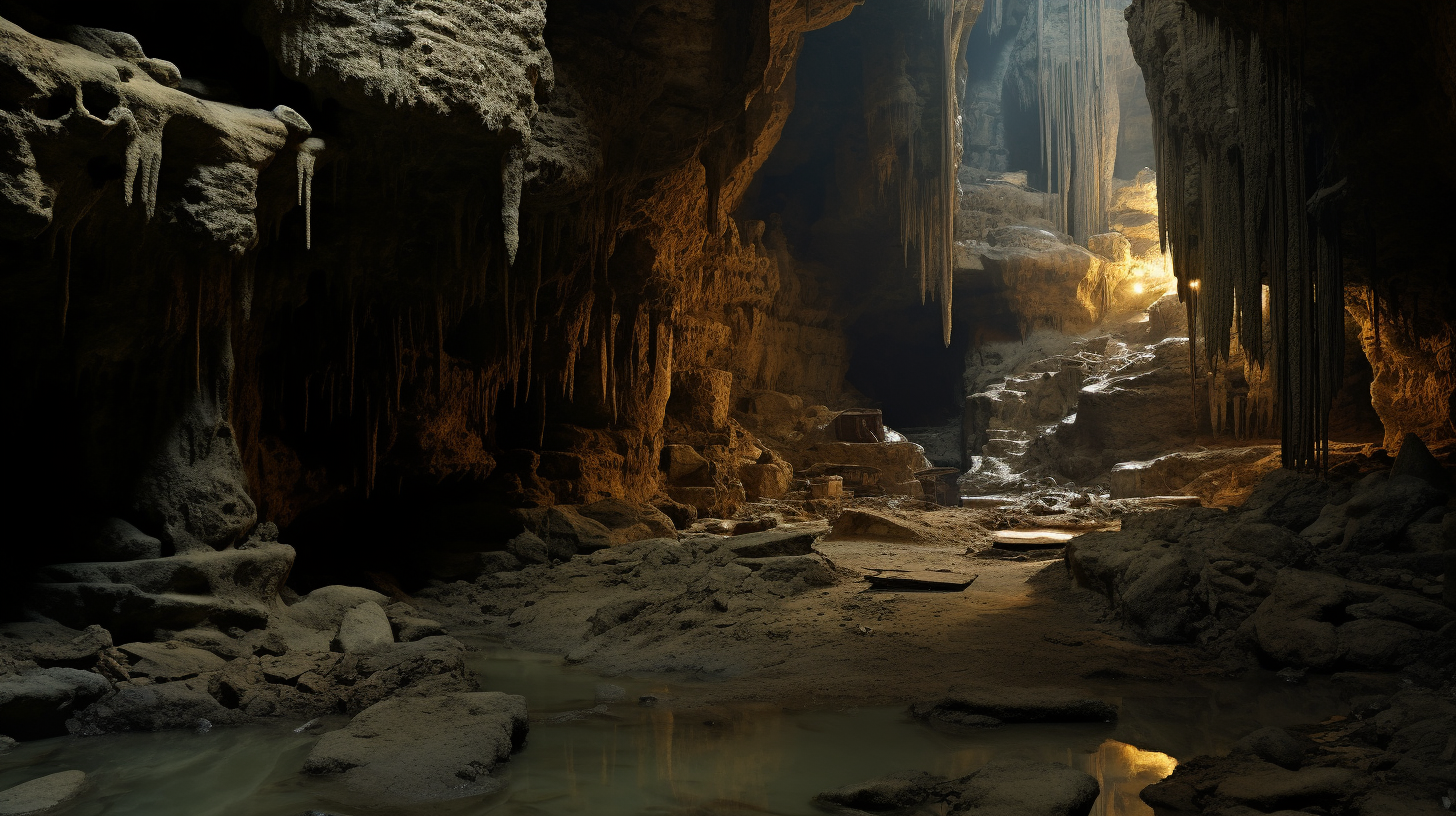An eerie silence prevails in what was once the chorus of chirping crickets – a silence that echoes through the subterranean labyrinths humanity now calls home. Imagine a world where daylight is but a faint memory, and the sun’s warming embrace is replaced with the cold, humid air of cavernous dwellings. The surface world, once abounding with life, is now a chaotic tapestry of extreme weather and desolation, leaving us with no choice but to burrow into the earth’s crust, like modern troglodytes fleeing a monster of their own creation.
In our previous installment, ‘Caverns of Hope: Underground Refuge or Tomb for Humanity’, we explored the potential salvation offered by these caves. However, the apparent ‘hope’ is akin to clinging to the illusion that a bandage could hold back a hemorrhage. Today, we delve deeper into the Caves of the Forgotten, uncovering stories of adaptation and struggle in these gloomy bowels of the earth.
The transition to the netherworld has not been kind. Humans, creatures of the sun, find themselves bereft of vital Vitamin D; their eyes wide in the permanent twilight, straining for a glimpse of nature. There is a palpable sense of loss – the loss of the sky, of the oceans, and of the open landscapes that once sparked infinite dreams. But in this reluctant retreat, we’ve unearthed more than just a safe haven; we’ve unearthed the resilience and indomitable spirit of humanity.
The Farmers of the Abyss tirelessly toil, nurturing hydroponic gardens that glow with an otherworldly hue, providing sustenance and a semblance of greenery. Meanwhile, Engineers of the Depths work to secure our habitat, reinforcing cavern walls and developing sustainable energy systems to mimic the natural day-night cycle, albeit with a pale imitation of true sunlight.
Our homes are now adorned with digital windows, screens that display rolling hills and azure skies, a bittersweet reminder of what we’ve lost. Children born into this realm grow up believing these images to be fairy tales. And as we delve into the psychology of life enclosed, we witness a shift in art and culture, a new narrative that reflects our current predicament incorporating a mix of nostalgia and a gritty acceptance of reality.
Yet, even in this seeming sanctuary, the menace of pollution has followed us beneath the surface. The air is often thick with contaminants, challenging the very technology that keeps us alive. The filtration systems are our lungs, and they tire as though afflicted by decades of asthma, choked by the remnants of a world up in smoke.
This subterranean existence is not without its conflicts. Scarcity breeds tension and governance disputes; the fragile social fabric threatens to unravel at any provocation. Here, in the Caves of the Forgotten, decisions are life or death, and every step forward is burdened with the weight of uncertainty.
The darkness of our new realm may be oppressive, the challenges daunting, but within these shadows, we have rediscovered the primal essence of community and cooperation – the only light guiding us through the perpetual night. In our quest for survival, we’ve drawn the curtain on the world above, but perhaps, in this act of retreat, lies a lesson for those still clinging to the glimpse of a future amidst the rubble.
Do we dare to envision a resurface, to chase the echoes of a time when the sky was ours? Or are these caves our final chapter, etching the story of a civilization too stubborn to heed nature’s desperate cries until the world turned its back on us?
Tomorrow is a myth in these Caves of the Forgotten, and today is a grim fairy tale written with the ink of despair. But remember, dear reader, for stories—even those of dystopia—hold power, and in their telling, we find the first whispers of a forewarning to change our ways before the echoes of our existence fade into silence.
